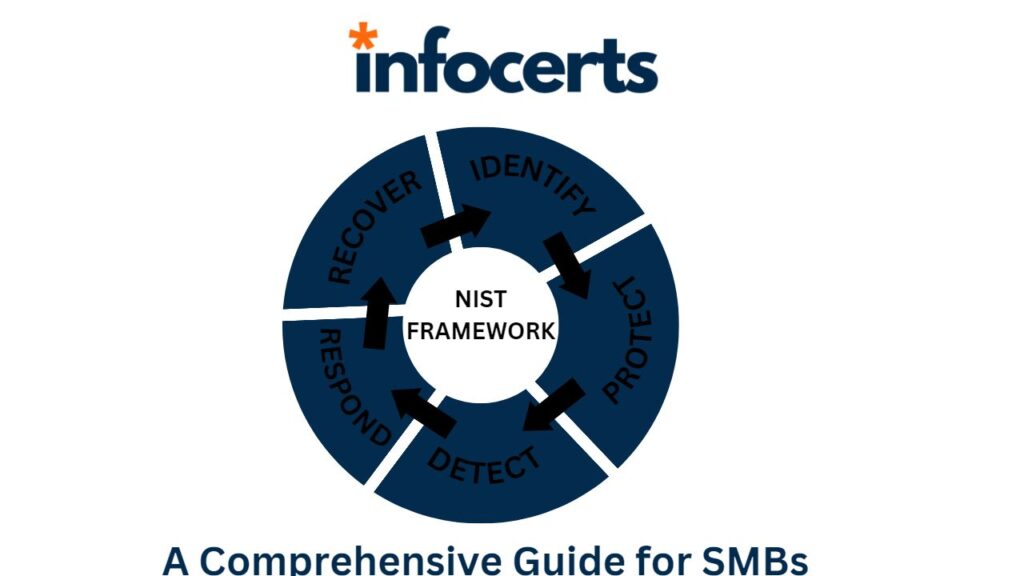Introduction: In today’s increasingly digital landscape, cybersecurity is of utmost importance for small and medium-sized businesses (SMBs). The risk of cyber threats and data breaches is ever-present, making it crucial for NIST CybersecurityFramework: SMB Guide to implement robust cybersecurity measures. To aid in this endeavor, the National Institute of Standards and Technology (NIST) has developed a comprehensive Cybersecurity Framework. In this blog post, we will break down the NIST Cybersecurity Framework and provide a comprehensive guide for SMBs to enhance their cybersecurity defenses.
Understanding the NIST Cybersecurity Framework: SMB Guide: The NIST CybersecurityFramework provides a structured approach to assess and manage cybersecurity risks. It consists of five core functions: Identify, Protect, Detect, Respond, and Recover.
- Identify: SMBs need to understand and prioritize their assets, assess their vulnerabilities, and evaluate potential risks. This includes conducting regular risk assessments, creating an inventory of assets, and establishing an understanding of external dependencies.
- Protect: This function involves implementing safeguards to ensure the security of critical infrastructure and sensitive data. SMBs should establish access controls, develop security policies, and provide employee awareness training.
- Detect: The ability to detect potential Cybersecurity incidents is crucial. SMBs should deploy monitoring systems, establish incident response procedures, and utilize intrusion detection technologies.
- Respond: In the event of a cybersecurity incident, SMBs must have a response plan in place. This includes defining roles and responsibilities, establishing communication channels, and conducting regular drills to test the effectiveness of the plan.
- Recover: After an incident, SMBs need to recover quickly and effectively. This involves implementing backup systems, conducting post-incident reviews, and updating the response plan based on lessons learned.
| NIST Cybersecurity Framework Core Functions | Description |
| Identify | Assess and prioritize assets, vulnerabilities, and risks. |
| Protect | Implement safeguards to secure critical infrastructure and data. |
| Detect | Establish monitoring systems and detect potential cybersecurity incidents. |
| Respond | Develop an incident response plan to effectively address cyber incidents. |
| Recover | Restore operations and recover from cybersecurity incidents. |
Implementing the NIST Cybersecurity Framework: To effectively implement the NIST Cybersecurity Framework, SMBs should follow these steps:
- Prioritize: Identify the most critical assets and focus on protecting them first.
- Assess: Conduct regular Risk Assessments to identify vulnerabilities and potential risks.
- Plan: Develop a comprehensive cybersecurity plan based on the identified risks and the NIST Framework.
- Implement: Put the plan into action by deploying security controls, establishing policies, and providing training.
- Monitor and Update: Continuously monitor the effectiveness of security measures and update the plan based on emerging threats and changing business needs.
Conclusion: By following the NIST Cybersecurity Framework, SMBs can significantly enhance their cybersecurity posture. Implementing the five core functions—Identify, Protect, Detect, Respond, and Recover—will help SMBs Mitigate Risks, safeguard their assets, and effectively respond to cyber incidents. Prioritizing cybersecurity and dedicating resources to its implementation is essential for SMBs to protect their operations, customers, and reputation in today’s digital world.
FAQs
- What is the NIST Cybersecurity Framework?
- Why is the NIST Cybersecurity Framework important for SMBs?
- How can SMBs implement the NIST Cybersecurity Framework?
- What are the core functions of the NIST Cybersecurity Framework?
- How can SMBs prioritize their cybersecurity efforts?
——————————————————————————————————————–
Infocerts, 5B 306 Riverside Greens, Panvel, Raigad 410206 Maharashtra, India
Contact us – https://www.infocerts.com

